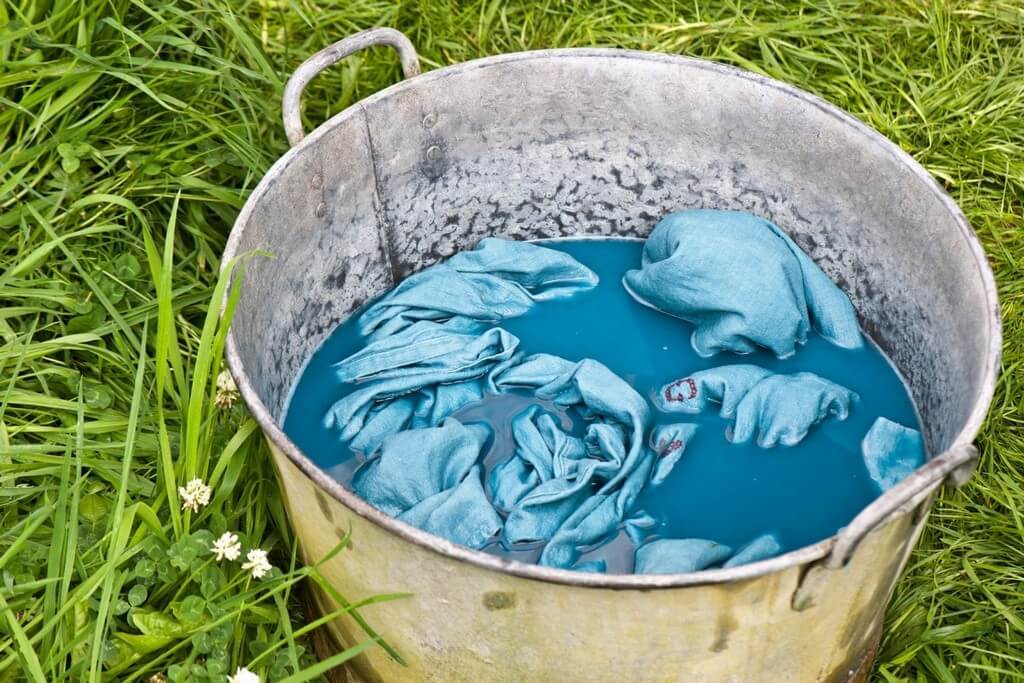NATURAL DYES: Different Types and Methods
29/07/2021 2021-07-29 16:16NATURAL DYES: Different Types and Methods
[vc_row][vc_column][vc_column_text]
Natural Dyes were the very first methods of designing and adding a uniqueness to clothing which dates back almost 4,000 years ago, that is, in the 10,200 BCE also known as the Stone Age. Dyeing not only adds colour to the clothing but also brings it to life. Of course, black and white will always be everyone’s favourite and white will always remain the base to all our art work, whether on a canvas or fabric.
Natural dyeing can be easy but time consuming. When dyeing with artificial colouring, it is faster as we use chemicals such as soda and hydrochloric acid, which also help the colour not bleed and stay on the fabric for years, if taken care properly. Whereas, these chemicals are not used when using natural dyes as they are used to be eco-friendly and using these chemicals will contradict the purpose and aim.
The best part of natural dyes is they are budget-friendly, eco-friendly, and can be done with ingredients available in our kitchens. Let’s admit that it can be fun.
FABRICS THAT CAN USED FOR NATURAL DYES
Since the dyes used are from our daily produce, the dye that it produces doesn’t stick onto every fabric, but of course, only natural fabrics or at least those with 90 percent natural fabric. Fabrics such as cotton, silk, wool, and linen are the best for dyeing. They will absorb the dye and give the fabric the perfect end finish. Whereas, synthetic fabrics can be used but require to be soaked in the fixative solution and dye bath for a longer period of time.
BASICS INGREDIENTS AND FABRIC PREPARATION:
The base ingredients are easily available in any household and even if not, are very affordable to purchase.
Ingredients:
- Salt
- Vinegar
- Water
Yes, that’s all you need in order to dye your fabrics. Though they may not seem like much, they are the crucial ingredient required for the fabric to absorb the dye from plant materials. The preparation of the fabric is a time consuming process and requires patience.
Preparation:
Dissolve ½ cup of salt for 8 cups of cold water with 1 part vinegar for every four cups of cold water, adn et it sit for about 10 minutes. This solution of salt and vinegar in cold water acts as a fixative or in other words glue for the dye to stick onto. After 10 minutes of letting the solution sit, the fabric can be added to it. The fabric needs to be damp as dry fabric does not have the capacity to absorb as much water as a damp or wet fabric. The fabric needs to sit in the solution for an hour.
Once the fabric has been soaked in the solution for an hour it can be taken out and rinsed in cold water. Now the fabric is ready to be dyed.
COLOURS FROM DIFFERENT PLANT MATERIALS
[/vc_column_text][vc_row_inner][vc_column_inner width=”1/3″][vc_single_image image=”43247″ img_size=”medium” css=”.vc_custom_1627554849682{padding-top: 12px !important;padding-bottom: 12px !important;}”][/vc_column_inner][vc_column_inner width=”1/3″][vc_single_image image=”43248″ img_size=”medium” css=”.vc_custom_1627554855848{padding-top: 12px !important;padding-bottom: 12px !important;}”][/vc_column_inner][vc_column_inner width=”1/3″][vc_single_image image=”43246″ img_size=”medium” css=”.vc_custom_1627554860892{padding-top: 12px !important;padding-bottom: 12px !important;}”][/vc_column_inner][/vc_row_inner][vc_row_inner][vc_column_inner width=”1/3″][vc_single_image image=”43250″ img_size=”medium” css=”.vc_custom_1627554874485{padding-top: 12px !important;padding-bottom: 12px !important;}”][/vc_column_inner][vc_column_inner width=”1/3″][vc_single_image image=”43249″ img_size=”medium” css=”.vc_custom_1627554882929{padding-top: 12px !important;padding-bottom: 12px !important;}”][/vc_column_inner][vc_column_inner width=”1/3″][vc_single_image image=”43251″ img_size=”medium” css=”.vc_custom_1627554893849{padding-top: 12px !important;padding-bottom: 12px !important;}”][/vc_column_inner][/vc_row_inner][vc_column_text]
Though every vegetable and fruit may have colour to it, neither is it necessary that all of them give out colour nor that they emit the colours as they show. Here is a list of plants that do have colour and the colour they emit onto the fabric when used as natural dyes:
- Orange: Carrots, Onion skins
- Brown: Tea Coffee
- Pink: Roses (pink), Avocado Skin, Seeds (any type)
- Blue: Red Cabbage, Purple Grapes
- Red-Brown: Pomegranates, Beetroots, Bamboo, Hibiscus (red)
- Grey-Black: Blackberries
- Red-Purple: Basil Leaves, Daylilies
- Green: Spinach, Mint Leaves, Plantain
- Yellow: Bay Leaves, Turmeric, Marigold Flower
LET’S PREPARE THE DYE!
Before you begin dyeing your fabric, place a paper or plastic sheet on the workstation or the counter on which you are going to be dyeing in order to avoid any stains. Use gloves to avoid stains even in your palms.
To prepare the dye, you need a big pot (preferably non-reactive ones such as stainless steel). In order to extract the dye from the produce, you need two times the water of the produce. Simmer the plant material in water until the colour darkens with occasional stirring. Once the dye has darkened as per your desire, strain out the plant material and add the curated dye to a stainless steel pot. Once the strained solution is ready, add the fabric into the dye bath and bring it to a slow boil for about an hour or so.
POST DYEING!
Remember that the dye will be much lighter than it appears once it dries. In order to achieve a darker hue, let the fabric sit in the dye bath for as long as it absorbs the colour that you desire. The fabric can sit in the dye bath even overnight to achieve the darkest hue.
Once the fabric has obtained the color that you require, rince the excess dye off the fabric by running it under cold water until the colour stops bleeding. The drying process is normal, it can be dried in the sun.
And there is your naturally dyed fabric!
Natural Dyes are the easiest and eco-friendly way of dyeing a fabric but requires a lot of patience. Using natural dyes also has a lot of health benefits such as no rashes, no dry skin. Though the process is long, it is a small step towards not just saving money but also to achieving a sustainable wardrobe.
NATURAL DYES: Different Types and Methods
[/vc_column_text][/vc_column][/vc_row]













